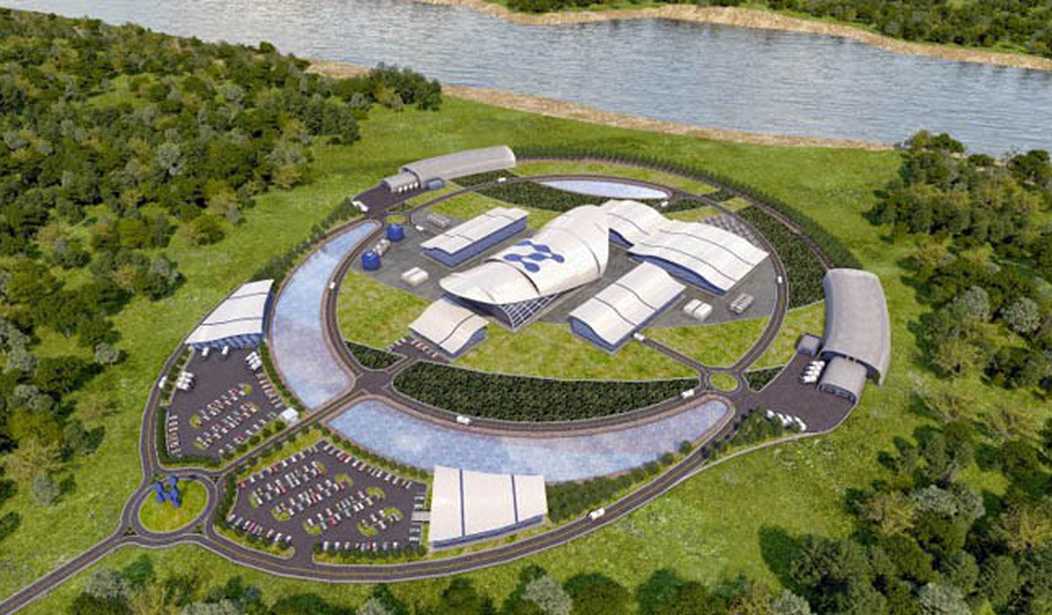The US Nuclear Regulatory Commission has formally approved a small modular reactor design from NuScale.
The U.S. has just given the green light to its first-ever small modular nuclear design, a promising step forward for a power source that remains controversial among some climate advocates but is experiencing a popular renaissance.
The Nuclear Regulatory Commission approved the design, which was published Thursday in the Federal Register, from NuScale, an Oregon-based reactor company. The publication of the design in the Register allows utilities to select this type of reactor when applying for a license to build a new nuclear facility. The design would be able to produce a reactor about one-third the size of a usual reactor, with each module able to produce around 50 megawatts of power…
Small modular reactors “are no longer an abstract concept,” U.S. Assistant Secretary for Nuclear Energy Kathryn Huff said in a statement. “They are real and they are ready for deployment thanks to the hard work of NuScale, the university community, our national labs, industry partners, and the NRC. This is innovation at its finest and we are just getting started here in the U.S.!”
The vote by the NRC to approve the design happened last summer but now the rule has been published so this is going to move forward.
The idea behind these reactors is that instead of building a large, custom design at a specific site, NuScale reactor modules are small enough to be built in a large factory, then transported and assembled on site. This is intended to bring the cost of manufacture down and also make the process of building additional reactors more like an assembly line with the same basic design repeated over and over.
It’s a good theory but it’ll be a few more years before the pilot plant is up and running in Idaho.
The Carbon Free Power Project (CFPP) will be the first NuScale Power small modular reactor (SMR) plant to begin operation in the United States near Idaho Falls, Idaho, at the DOE’s Idaho National Laboratory. The SMR plant will deploy six, 77-megawatt modules to generate 462 megawatts of carbon free electricity…
The first NuScale Power Module™ will begin generating power in 2029, with the remaining modules coming online for full plant operation by 2030.
In the meantime, there is some bad news. Just last year NuScale was promising that its CFPP reactor would provide power at $58 per megawatt. But inflation has made the cost of everything, including steel used to build this project, much more expensive. As a result, NuScale announced earlier this month that the cost per megawatt had gone up more than 50%:
The new DCRA that was approved by the PMC also establishes an updated target price of $89 per megawatt hour, which reflects the changing financial landscape for the development of energy projects nationwide. NuScale and the CFPP have yet to execute the amendment to the DCRA adopting the new price target.
The Class 3 PCE determined that the cost of the CFPP has been influenced by external factors such as inflationary pressures and increases in the price of steel, electrical equipment and other construction commodities not seen for more than 40 years. For example, the producer price index for commodities such as carbon steel piping and fabricated steel plates have increased by more than 50% since 2020. These inflationary pressures are increasing the costs for all power generation and infrastructure projects.
Meanwhile, there’s an even cheaper nuclear option available in many parts of the world: Extending the life of existing power plants for another 20 or more years.
The allure of carbon-free power is stronger than ever. As countries are desperate to lower emissions and reach climate goals, the world also faces a shortage of traditional fossil fuels. The answer to this contradiction has taken an unlikely turn: Keep nuclear reactors running for far longer than anyone ever expected.
How long? Already, many of the world’s facilities are scheduled to run far beyond what’s considered the typical 40-year lifespan. Operators are pushing to keep some reactors running for as long as 80 years — even beyond the average 77-year life expectancy of American people. Now, researchers are even starting to consider whether the machines can keep generating electricity for 100 years.
The country has 92 nuclear reactors with an average age of 42 years.
Six reactors have received extensions for up to 80 years, and operators of 25 more have applied for or announced they will seek the same renewal.
It’s like the old saying that the cheapest car is the one you already have in your garage. Running these plants twice as long as expected may not be idea but it’s green energy that doesn’t take a decade to build. For the people on the left who claim to care about green energy this ought to be a no brainer.








Join the conversation as a VIP Member